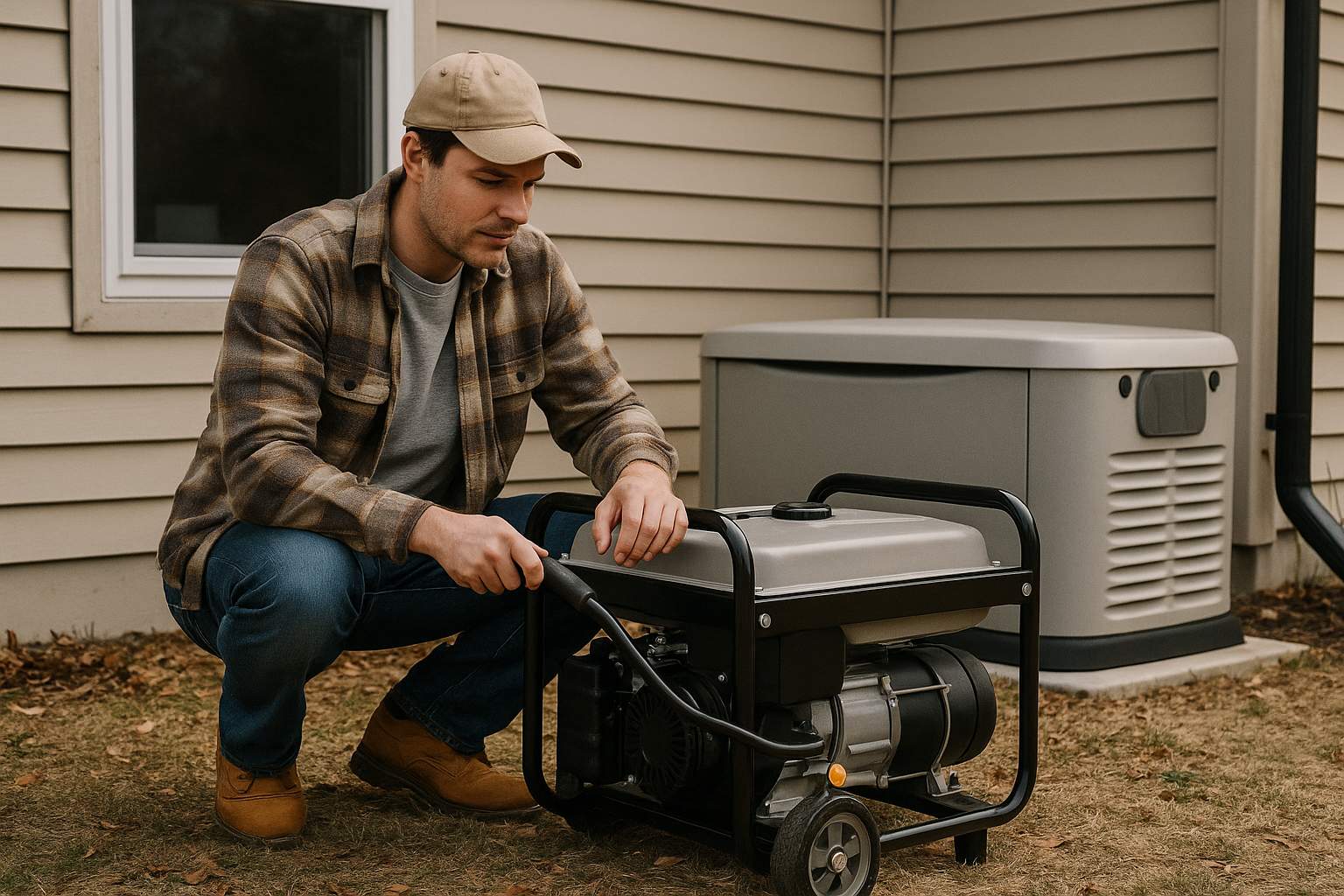Home Generators: The Backup Many Families Wish They Had
When the power goes out, everything stops. The fridge warms, the lights fade, and the news disappears just when you need it most. Across the country, more families are investing in home generators to keep essential systems running when the grid gives out. Whether it is a storm, wildfire, or overloaded power line, outages are lasting longer and striking more neighborhoods each year.

Power Failures Are on the Rise
Electric grids are under more stress than ever. The U.S. Energy Information Administration reports that the average American home experienced more than seven hours without power last year, the highest level in over a decade. In states like Texas, California, and Florida, outages linked to extreme weather have doubled since 2015. When blackouts hit during freezing temperatures or heat waves, the risks can be serious. FEMA notes that extended outages can disrupt medical equipment, spoil food, and make communication difficult when cell towers lose backup power.
The New Reality of Weather and Energy
What once felt like rare “hundred-year storms” are now happening every few seasons. NOAA data shows that billion-dollar weather disasters are occurring nearly twice as often as they did twenty years ago. Aging infrastructure and population growth make grids more fragile. Power companies warn that planned outages, known as “public safety shutoffs,” will continue in fire-prone or flood-risk areas to prevent larger disasters. That means more Americans will need to think about how to stay powered on their own.
How Home Generators Work
Backup generators supply electricity directly to your home during an outage. Generac, one of the largest U.S. manufacturers, explains that standby units connect to your natural gas or propane line and automatically start within seconds of a power loss. Portable models can be fueled manually with gasoline or propane and are better for occasional or light use. Whole-home systems can power major appliances, heating, and medical devices continuously until the grid returns.
The Cost of Preparedness
Prices vary widely. Consumer Reports finds that portable generators start around five hundred dollars, while whole-home systems can range from seven to ten thousand dollars installed. Though not cheap, the investment can protect far more in avoided food loss, hotel stays, or home damage from frozen pipes. Many companies now offer financing plans or maintenance subscriptions. Some homeowners insurance policies even offer premium discounts for properties with certified standby systems.
Choosing the Right Size
Picking the correct wattage matters more than brand. Home Depot provides calculators that estimate how much power common appliances draw. A typical refrigerator, furnace fan, and a few lights need about five thousand watts combined. Households that rely on electric heat, sump pumps, or medical equipment may need up to ten thousand. Oversizing wastes fuel, but undersizing leaves you in the dark when you need backup the most.
Fuel and Maintenance Tips
A generator is only reliable if it starts when it counts. Briggs & Stratton recommends running portable models at least once a month to keep the engine lubricated and prevent stale fuel. Always store gasoline safely outside the home and add stabilizer for long-term storage. For standby units, schedule yearly service checks and keep air intakes clear of leaves or snow. Simple upkeep ensures the system works instantly during emergencies.
Clean Energy Alternatives
For homeowners concerned about noise or emissions, EcoFlow and Jackery now sell battery-based “solar generators.” These use panels to charge lithium batteries that can run smaller appliances quietly indoors. They cost more upfront but require no fuel or exhaust management. Some families pair solar backups with traditional generators for layered protection — quiet daily power with heavy-duty coverage when storms hit.
Peace of Mind in an Uncertain Grid
Preparedness may sound dramatic, but it is increasingly practical. Winter storms in Texas and rolling blackouts in California proved that outages can happen anywhere, to anyone. Owning a generator is not about panic; it is about stability. When your neighbors scramble for candles, your home stays lit, your fridge stays cold, and your family stays connected. As more companies advertise on national news about “energy independence,” they are speaking to a real truth: self-reliance is once again a valuable household skill.
Sources
U.S. Energy Information Administration
FEMA
NOAA
Generac
Consumer Reports
Home Depot
Briggs & Stratton
EcoFlow
Jackery
